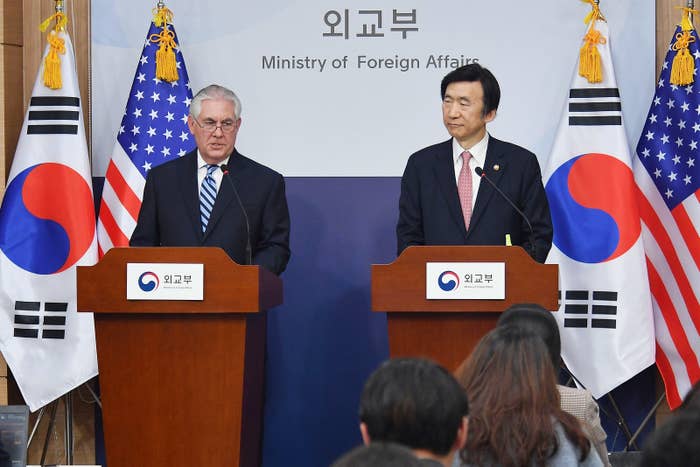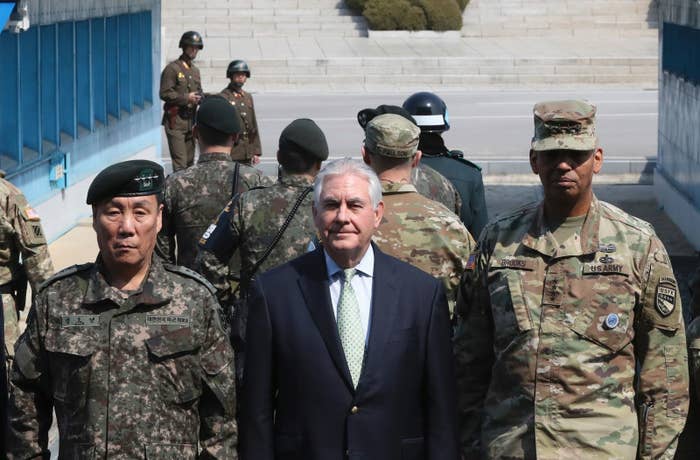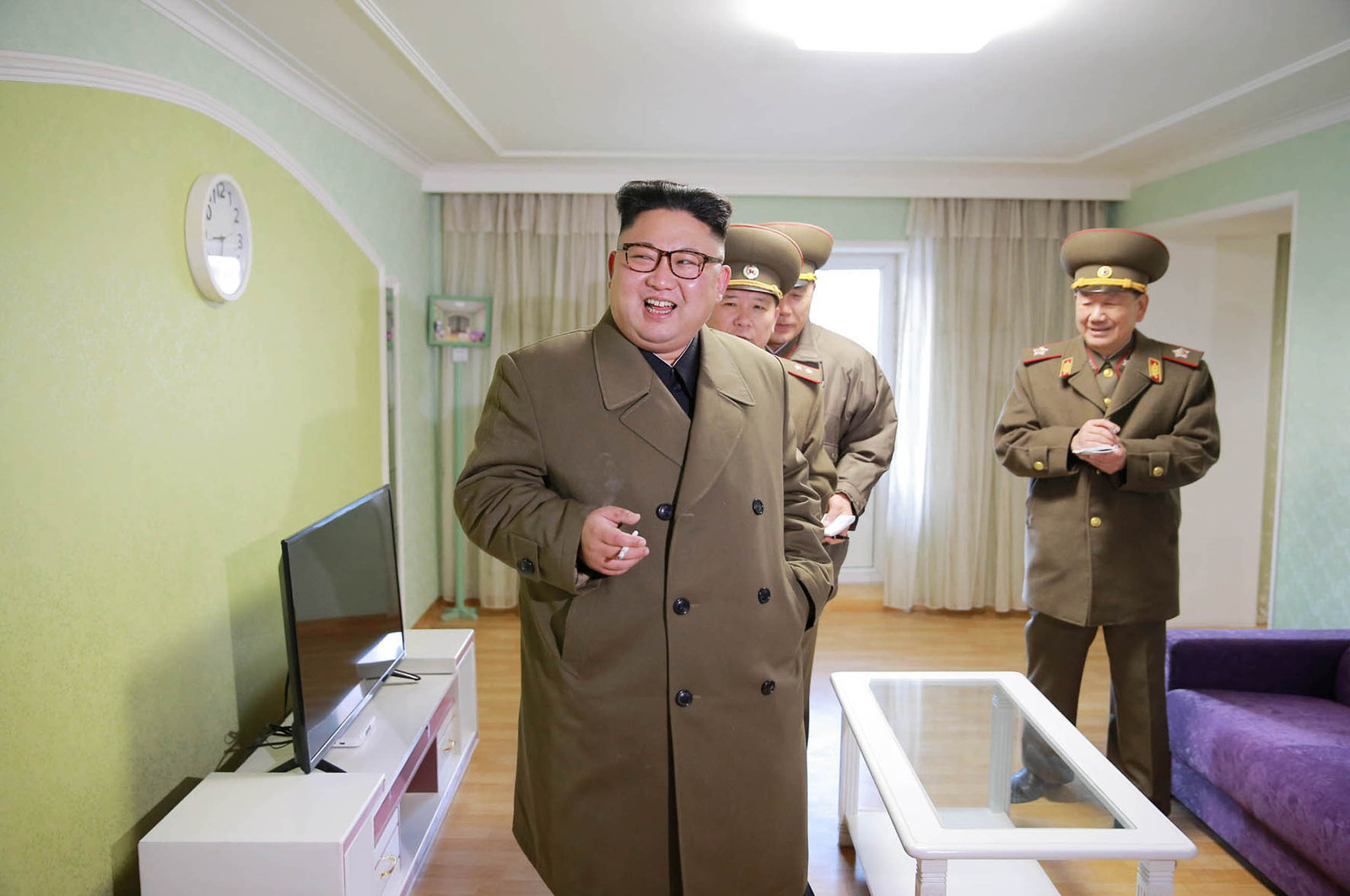
BEIJING — Secretary of State Rex Tillerson made headlines early in his trip to east Asia on Friday when he said the US would break with two decades of a “failed approach” on North Korea.
But analysts say the Trump administration, in its efforts to break away from the Obama-era policy of “strategic patience” and other policies adopted by the last three presidents on North Korea, are about to confront a host of undesirable options.
“With respect to North Korean nuclear weapons, the policy of strategic patience is the least-awful of a menu of awful options,” said Jennifer Lind, an associate professor at Dartmouth College who focuses on international politics.
In short, strategic patience entails using sanctions to cut Pyongyang off from the global economy and from most diplomatic ties until it agrees to halt its nuclear program. In practice, it meant that the US and the UN placed round after round of increasingly harsh sanctions on North Korea after each of its nuclear or missile tests.
If the goal was to force Pyongyang to stop its nuclear weapons and ballistic missiles programs, the policy clearly did not succeed. North Korea appears closer than ever before to developing a ballistic missile capable of striking the US. But what are the alternatives?
Tillerson raised a lot of eyebrows when told a Fox News reporter this week that the administration would not take the possibility of a military strike off the table. (No administration before Trump took it off the table either, to be clear.)

But a military strike to instigate regime change would likely result in nuclear war and millions of deaths — the very thing the international community has been trying to avoid. Even so-called surgical strikes targeting nuclear reactors and missile production plants would be risky because not all of the locations of those sites are known, Lind said. And even if those strikes didn’t escalate into nuclear war, North Korea could do a lot of damage to South Korea with its conventional weapons.
Some analysts have also proposed strengthening South Korean missile capabilities or even dispatching a missile defense system to Japan. Though those actions would be a show of strength for the US, it’s unclear what tangible impact they would have.
“If they look to ramp up pressure on North Korea with ‘fightin' talk,’ the North Koreans have historically shown that they are willing to ramp it back up,” said Andray Abrahamian, an honorary fellow at Macquarie University who focuses on North Korea. “They know that their enemies’ societies have to respond to public opinion and manage each other, and generally are less willing to seem like they want to go to war.”
Trump could also keep slapping tougher sanctions on North Korea. On Twitter, and in his campaign speeches, he’s repeatedly lambasted China for not doing enough to reign in its neighbor. Because international sanctions passed by the UN Security Council must necessarily involve China, that signals that Trump may want to keep following the sanctions path, at least as part of his approach.
But there’s no evidence that the sanctions in place are effective — and in fact, despite several rounds of US and UN sanctions over the two terms of the Obama administration, North Korea continues to conduct nuclear and missile tests.
A major flaw in the sanctions approach is that China, North Korea’s biggest trading partner and last major ally, has failed to adequately enforce them, according to independent researchers. (China denies the charge.) It doesn’t help that North Korea also receives a major aid package from China, the size and scope of which is a state secret. That package could include not only food aid, but also oil and gasoline.
So while sanctions have targeted everything from the North Korea’s most important foreign trade bank and coal exports to expensive handbags and cars, near the border between the two countries, wealthy North Koreans can still be seen ferrying Gucci purses home in BMWs, and trucks can be seen carrying coal across the border.
And what about the last option — negotiations?
A set of talks between the US, North Korea, South Korea, China, Japan, and Russia — called the Six-Party Talks — have been on hold since 2009, as North Korea has insisted that it would only speak directly to the US. The Obama administration insisted that a regional dialogue was needed, a stance the Trump White House is unlike to adopt.
During the Clinton years, the US used aid and the chance to be part of the global economy as incentives for North Korea to halt uranium enrichment. But talks fell apart when North Korea reneged on its commitments. Then in 2012, during the Obama administration, a deal that swapped food aid for a halt to Pyongyang’s nuclear program fell apart after just a month.
The process damaged whatever trust existed between Pyongyang and the international community. In Seoul this week, Tillerson threw cold water on any hopes that negotiations might be an option, saying North Korea must first give up its weapons of mass destruction before any talks could proceed. Pyongyang sees this as a non-starter.
“Pyongyang cheated; the policy failed,” Lind said. “Lucy has already pulled the football away too many times for us to try to keep kicking it.”

But though engagement has failed in the past, analysts pointed out that Trump is unencumbered by the baggage of previous administrations and has turned up his nose at some of the conventions of US diplomacy.
“It’s not news to anyone that Trump sees himself as a dealmaker,” said Adam Cathcart, a lecturer in history at the University of Leeds who writes about China-North Korea relations. “But you have to see two or three deals down the road. What is the end game when it comes to the Korean peninsula?”
Cathcart suggested that Trump, given his ambivalence toward promoting human rights abroad, might agree to set that issue aside in exchange for some concessions from Pyongyang.
“But what do you get in return?” he said. “If you aren’t talking to them there’s no opportunity to use that.”
What’s clear is that North Korea is much further along in its weapons program now than the last time talks were considered a serious option. Though US policy, echoed by Tillerson this week, has been for North Korea to totally give up its weapons of mass destruction as it first promised in 1992 as a prerequisite for talks, North Korea may now be unwilling to do that. Ever.
The alternative is to negotiate a “freeze” with North Korea — essentially, a long-term halt to nuclear and missile tests and a ban on sales of weapons or technology.
“This isn’t the mid-2000s anymore. Pyongyang isn’t willing to even discuss or pretend to discuss denuclearization,” Abrahamian said. “So then the US is looking at talking about a freeze, which is essentially an admission that the battle to stop North Korea from becoming a nuclear weapons state has been lost.”

